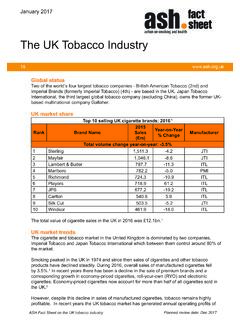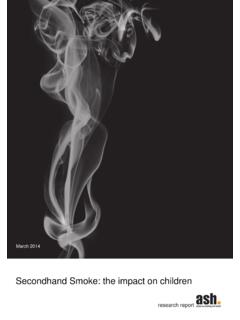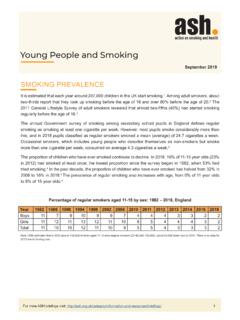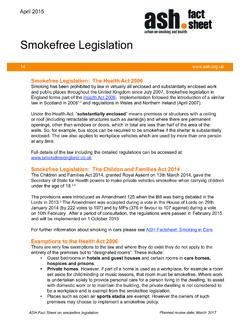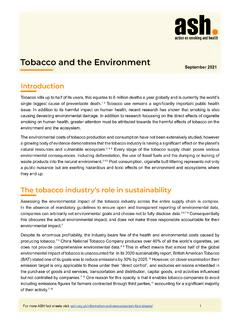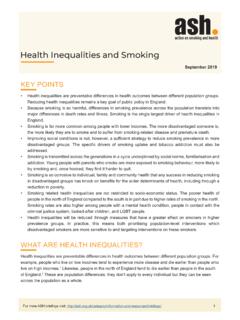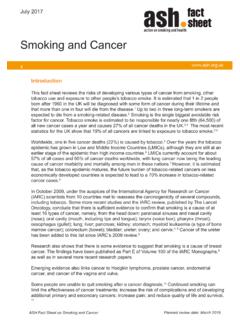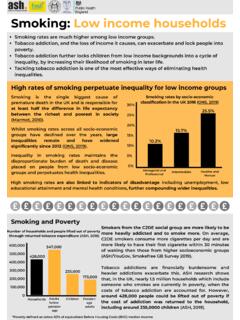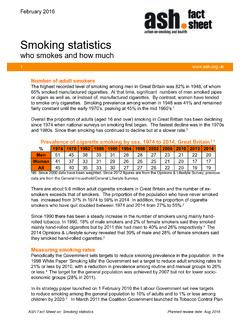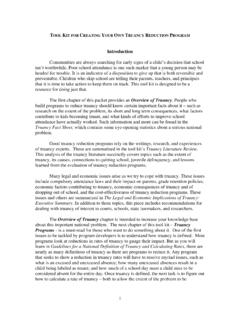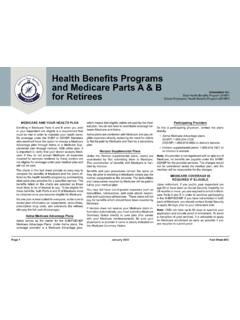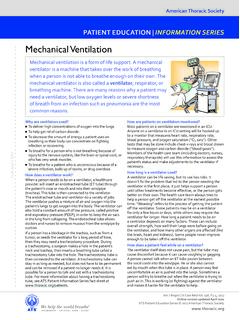Transcription of May 2021
1 1 This fact sheet includes statistics on tobacco consumption and smoking-related illness and death. The highest recorded level of smoking among men in Great Britain was 82% in 1948, of whom 65% smoked manufactured cigarettes. At that time, significant numbers of men smoked pipes or cigars as well as, or instead of, manufactured cigarettes. By contrast, women have tended to smoke only cigarettes. Smoking prevalence among women in 1948 was 41% and remained constant until the early 1970s, peaking at 45% in the mid-1960s, according to tobacco industry Overall, the proportion of adults (aged 16 and over) smoking in Great Britain has been declining since 1974 when national government surveys on smoking among adults first began. Since then, smoking has continued to decline, albeit at a slower The fall in smoking rates is due to a combination of smokers quitting and a growth in the population of people who have never smoked.
2 Various methods have been used to measure smoking rates in Great Britain over the years. There are three Government surveys from which data in this factsheet is sourced: The General Household/General Lifestyle Surveys (GLS), the Opinion & Lifestyle Survey (OPN), and the Annual Population Survey (APS)2. Table 3 demonstrates the variation in measurements. Government targets are set on the basis of the APS data as this has the largest sample size. Please note that due to differences in sample size and methodology, overall prevalence figures differ between surveys, though the trends are consistent. Table 1: Cigarette Smoking Prevalence, Adults Aged 18 and Over, Countries of the UK, 20194 England Wales Scotland Northern Ireland UK Adults There are about million adult cigarette smokers in the United The proportion of the population who have never smoked has increased from in 1974 to in 2019.
3 Table 2: Prevalence of cigarette smoking by sex (GLS/OPN/APS), 1974 to 2019, Great Britain & UK 2 3 4 % 1974 1978 1982 1986 1990 1994 1998 2002 2006 2010 2014 2015 2016 2017 2018 2019 Men 51 45 38 35 31 28 28 27 23 21 20 Women 41 37 33 31 29 26 26 25 21 20 17 All 45 40 35 33 30 27 27 26 22 20 NB: Since 2000 data have been weighted. 1974-2010 figures are from the GLS/OPN surveys and are for Great Britain. Data from 2014 onwards is from the Annual Population Survey and is for the ,3,4 May 2021 2 Table 3: Smoking prevalence by survey, 1974-2019 2 3 4 NB: The earliest data available from the APS is from ,3 TYPES OF TOBACCO SMOKED Across Great Britain, since 1990, there has been a steady increase in the number of smokers using mainly hand-rolled tobacco. In 1990, 18% of male smokers and 2% of female smokers said they smoked mainly hand-rolled cigarettes but by 2011 this had risen to 40% and 26% The 2018 Opinions & Lifestyle survey revealed that of male and of female smokers said they smoked hand-rolled This is most likely due to the growing unaffordability of straight cigarettes, and that smoking is becoming more concentrated among people on low incomes.
4 TARGETS TO REDUCE SMOKING Periodically, the Government sets targets to reduce smoking prevalence in the population. 5,6 Most recently, in July 2019, the Government announced its ambition for a Smokefree 2030 (where the overall percentage of the population who smoke is 5% or below) through its consultation document Advancing our health: prevention in the 2020s . In July 2017, the Conservative Minority Government published a Tobacco Control Plan for England, outlining the steps needed to drastically reduce smoking rates by 2022. Its goals included reducing the number of 15 year olds who smoke regularly from 8% to 3% or below, reducing smoking in adults from to 12%, and reducing smoking in pregnancy from to 6% or ,8 In March 2011 the Coalition Government launched its Tobacco Control Plan for England in which it set out ambitions to reduce adult smoking prevalence to or less by 2015 and to reduce smoking among 15 year-olds to 12% or less by In its strategy paper launched on 1 February 2010 the Labour Government set new targets to reduce smoking among the general population to 10% of adults and to 1% or less among children by In the 1998 White Paper Smoking Kills the Government set a target to reduce adult smoking rates to 21% or less by 2010.
5 With a reduction in prevalence among routine and manual groups to 26% or The target for the general population was achieved in 2007 but not for lower socio-economic groups (28% in 2011). In general, men are more likely to smoke than women. Since 2010, smoking has become less common across all age Smoking continues to be lowest among people aged 60 and over. Although they are more likely than younger people to have ever been smokers, they are also more likely to have stopped smoking. Table 4: Cigarette smoking by age: Percentage of adult population, Great Britain 2,4 % Age 16-24 25-34 35-49 50-59 60+ 1974 1984 1994 2004 2014 2015 2016 % 1974 1978 1982 1986 1990 1994 1998 2002 2006 2010 2014 2015 2016 2017 2018 2019 OPN/GLS APS 3 2017 2018 2019 There is a strong link between cigarette smoking and socio-economic group.
6 In 2019, of adults in routine and manual occupations smoked compared with in managerial and professional Historically there has been a slower decline in smoking among manual groups, resulting in smoking becoming increasingly concentrated in this population. However, in recent years, smoking rates have fallen by a similar amount across all social groups, so that the differential between non-manual and manual has not changed significantly. Table 5: Prevalence of cigarette smoking by socio-economic classification: Persons aged 16 and over. Great Britain, 2019. Since the mid-1970s cigarette consumption has fallen among both men and women, particularly among heavy smokers (defined as those smoking more than 20 cigarettes a day). In 1974, 26% of men and 13% of women were heavy smokers compared with 5% of men and 3% of women in 2012. The average number of cigarettes smoked per day by men and women has seen a general downward trend.
7 Table 6: Average daily consumption of manufactured cigarettes per smoker, GB, 1949-20191 2 3 4 Year 1949 1959 1969 1979 1990 2000 2010 2011 2012 2013 2014 2015 2016 2017 2018* 2019* Men Women *Weighted and redesigned question. From 2018 the survey question used to measure average daily cigarette consumption was transformed for telephone and online data collection modes. This means that the data collected 1974-2017 are not comparable with the latest estimates. CIGARETTE CONSUMPTION AND SOCIO-ECONOMIC GROUP Higher cigarette consumption is associated with lower socio-economic status. A 2021 YouGov survey commissioned by ASH found that 34% of current smokers in higher social groups (AB) smoked 6 or fewer cigarettes per day compared to 24% in the lower social group (DE). People in social group DE are more likely to be heavy smokers: 10% reported smoking 21 to 30 cigarettes a day compared with 8% in the highest social DEPENDENCE ON CIGARETTE SMOKING There are several ways of measuring dependence on smoking including the desire to quit amongst those who nevertheless continue to smoke.
8 Other ways of measuring dependence include how soon the first cigarette of the day is smoked after waking. OPN data shows of current smokers in Great Britain had their first cigarette within the first 30 minutes of waking. (OPN 2018). of current smokers said they wanted to stop smoking, and only said that they do not intend to stop (OPN 2018). % Employed Unemployed Economically Inactive Smoker Ex-smoker Never-smoker 4 Smoking is the primary cause of preventable illness and premature death, accounting for approximately 74,600 deaths a year in Smoking harms nearly every organ of the body and dramatically reduces both quality of life and life expectancy. Smoking causes lung cancer, respiratory disease and heart disease as well as numerous cancers in other organs including the lip, mouth, throat, bladder, kidney, stomach, liver and cervix.
9 The 2010 US Surgeon General report, How Tobacco Smoke Causes Disease , concludes that there is no risk-free level of exposure to tobacco smoke, and there is no safe tobacco product. 12 It is estimated that the global yearly death toll as a result of tobacco use is currently 7 million (including exposure to second hand smoke).13 On current smoking trends this is expected to rise to around 10 million a year by It is predicted that by the end of the 21st century, tobacco will have killed one billion people within the For every death caused by smoking, approximately 20 smokers are suffering from a smoking related ,15 In England it is estimated that in 2019-20, among adults aged 35 and over, around 506,100 NHS hospital admissions were attributable to smoking, accounting for 4% of all hospital admissions in this age The cost of smoking to the National Health Service in England is estimated to be billion a DEATHS CAUSED BY SMOKING Smoking is the leading cause of preventable death and disease in the UK.
10 About half of all life-long smokers will die prematurely, losing on average about 10 years of Smoking kills more people each year than the following preventable causes of death combined. Data from the Global Burden Study of Disease, 2019 reports the risk factors responsible for deaths in the United Kingdom:19 Smoking- (119,776)19 High body mass index- (56,215)19 Alcohol use- (25,242)19 Low physical activity- (14,335)19 Drug use- (5,015)19 Most smoking-related deaths arise from one of three types of disease: lung cancer, chronic obstructive pulmonary disease (COPD which incorporates emphysema and chronic bronchitis) and coronary heart disease (CHD). In 2019, 15% (74,600) of all deaths of adults aged 35 and over in England were estimated to be attributable to Of these smoking caused:16 35,500 (52%) of all cancer deaths 23,700 (35%) of all respiratory deaths 14,700 (13%) of all circulatory disease deaths 5 Table 7.

